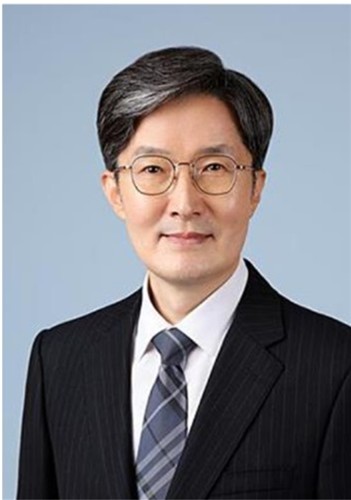At the start of the year, the inauguration of the Donald Trump administration in the United States has ushered in an unprecedented level of uncertainty in global capital markets. The fundamental cause lies in emerging signs of a shift in U.S. policy that has been maintained since the end of World War II. Following the war, the U.S. required a new international division of labor reflecting productivity gaps with Europe. To expand overseas markets, it had to move away from protectionism and isolationism, entering an era of free trade. Accordingly, the U.S. sought to establish a multilateral trade system through an open, international division of labor.
Since joining the World Trade Organization (WTO) in 2001, China has faithfully played the role of the "world's factory" within the international division of labor, using its massive trade surplus to purchase U.S. Treasuries. This created a system of mutual cooperation between the two countries in both real and capital markets. However, as China laid the foundation for remarkable economic growth, the situation began to change. Furthermore, as China pursues its national goal of the "great rejuvenation of the Chinese nation" by 2049, competition and confrontation between the G2 economies have become an inevitable reality. The U.S. is now showing signs of returning to protectionism and isolationism to contain China.
Key factors that have underpinned the international division of labor for decades—geopolitical stability, global economic openness, and a low interest rate environment—are now disappearing. The changed investment landscape is characterized by lower expected returns and higher risks. Therefore, the current high volatility should not be viewed merely as the start of a new cycle, but rather as a potential inflection point signaling a shift to a new investment paradigm. Trump's tax cut policies, unlike his first term when interest rates and fiscal deficits were half their current levels, now risk exacerbating the U.S. fiscal deficit amid high interest rates. If this is indeed a paradigm shift, it calls for a fundamental reassessment of traditional perspectives on returns and risk.
Recently, the correlation between U.S. Treasury yields and the value of the dollar has weakened. Typically, rising U.S. Treasury yields widen interest rate differentials with other countries, generating excess investment demand and strengthening the dollar. However, this relationship has changed. Moreover, as confidence in the dollar as a reserve currency wavers and market volatility increases, the dollar has at times weakened. Such phenomena have been observed following tariff announcements and the outbreak of war in the Middle East in the first half of the year. Additionally, in the current environment of high interest rates and inflation, there are growing doubts about whether bonds can still serve as a safe haven in portfolios. As a result, many of the basic assumptions underlying portfolio construction are being called into question.
The U.S. trade deficit, which has recently become a focal point for the U.S. government, also reflects the large inflow of foreign capital into the U.S. economy. This has increased the U.S. economy's dependence on foreign capital, potentially making it more vulnerable. Asian countries such as China, which previously invested $7.5 trillion of their large trade surpluses in U.S. assets like Treasuries, are now inevitably changing this pattern. China has been gradually reducing its holdings of U.S. Treasuries, and Japan is reportedly considering diversifying its investments into Europe, Australia, and Canada. Australian pension funds have also announced plans to reduce their U.S. asset holdings. However, South Korean investors' overseas securities investments, including in the U.S., have reached record highs. Recently, the National Pension Service (NPS) announced plans to raise its allocation to overseas equities from 35.9% to 38.9% next year, in contrast to many foreign institutional investors.
Chinese and Canadian pension funds are reportedly holding off on alternative investments in the U.S. due to geopolitical risks and tax concerns. British pension funds are also said to be considering reducing their exposure to U.S. assets, while Danish pension funds are reviewing fundamental changes to their asset allocations. A German retirement pension consulting firm has recommended avoiding U.S. investments. Global family offices are also moving to reduce their U.S. investments. As an alternative, Canadian pension funds have announced plans to increase investments in Europe, including the UK. Furthermore, more institutions are considering diversifying investments into Asia, including Japan, Australia, and India, as part of their diversification strategies.
Regional diversification of investments should be approached as a means of seeking alternatives to the U.S. market. In reality, there is currently no market that can fully replace the U.S., making this a challenging task. However, with the possibility of a long-term paradigm shift in mind, gradual consideration should begin. This is because alternative markets in Europe and Asia are smaller and more fragmented than the U.S., with limitations in liquidity and diversity. They also lag behind the U.S. in terms of technological innovation, regulatory frameworks, growth potential, and market size. Ultimately, U.S. investment assets remain the core of global investment portfolios.
Nevertheless, in a rapidly changing investment environment, South Korean investors should focus less on predicting specific future scenarios and more on constructing portfolios and managing risks to prepare for a range of possibilities. Rather than asking "what will happen," we must prepare for "anything that can happen." It is time to develop contingency plans from a long-term perspective, considering the potential for a new investment paradigm to materialize across various asset classes. Unless one is certain that the old paradigm will persist without any change in traditional investment formulas, there is no reason not to begin this process.
(Jang Dong-heon, Advisor at Yulchon LLC / Former Chief Investment Officer, Government Employees Pension Service)

jsjeong@yna.co.kr
(End)
© Yonhap Infomax. Unauthorized reproduction, redistribution, or use for AI training is strictly prohibited.
Copyright © Yonhap Infomax Unauthorized reproduction and redistribution prohibited.

